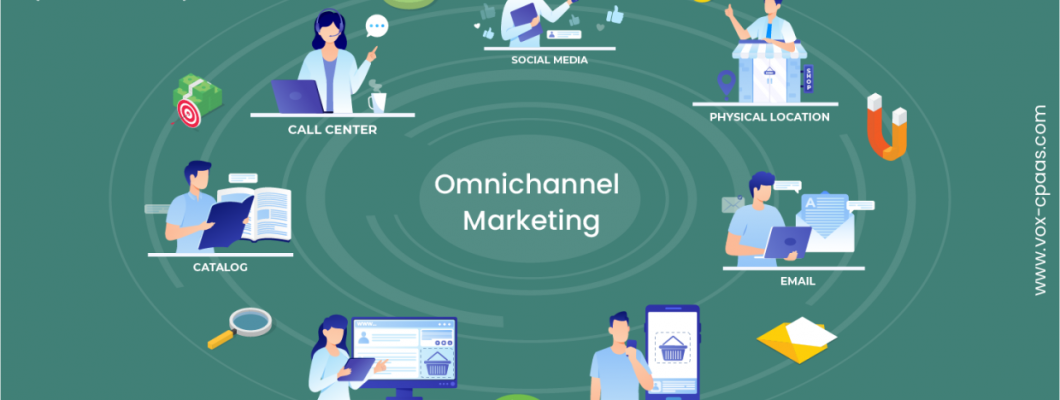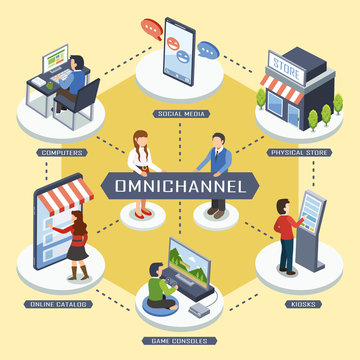
Seamless Shopping Across Channels: Your Guide to Building an Omnichannel E-Commerce Strategy
In today’s digital-first world, consumers expect brands to deliver a seamless shopping experience across multiple touchpoints. Whether they are browsing products on a website, receiving promotions via social media, or visiting a physical store, they demand consistency and fluidity. This shift has led to the rise of omnichannel e-commerce, where businesses integrate their online and offline channels to provide a unified customer journey. Creating a seamless omnichannel experience is now a necessity for brands that want to stay competitive and meet the evolving expectations of modern shoppers.
What is Omnichannel E-Commerce?
Omnichannel e-commerce is a retail strategy that integrates various sales and marketing channels—both online and offline—into a cohesive and unified experience for the customer. It goes beyond simply having multiple touchpoints; it ensures that all channels are connected, providing a seamless journey across platforms such as websites, mobile apps, social media, email, and brick-and-mortar stores.
The goal of omnichannel is to provide a consistent brand experience regardless of where or how the customer engages with the business. For example, a customer should be able to browse a product online, add it to their shopping cart, and later complete the purchase in a physical store without any friction or disconnection between the channels.
Benefits of a Seamless Omnichannel E-Commerce Experience
1. Improved Customer Satisfaction
A seamless omnichannel strategy enhances customer satisfaction by creating a frictionless experience. Shoppers can engage with the brand in the way they prefer, whether that's in-store, online, or via mobile, and enjoy a consistent experience across all channels. This reduces frustration and creates positive experiences that foster loyalty.
2. Increased Customer Retention and Loyalty
Omnichannel strategies lead to higher customer retention. When customers can transition easily from one channel to another—like moving from browsing on mobile to purchasing in-store—they are more likely to return for future purchases. A unified experience also promotes brand loyalty as customers feel more connected to the brand’s ecosystem.
3. Higher Conversion Rates
When customers have access to consistent information and experiences across all channels, it simplifies their decision-making process. Omnichannel experiences reduce confusion and hesitation, leading to higher conversion rates as customers can make purchases whenever and wherever they choose.
4. Better Data Collection and Insights
Omnichannel e-commerce provides businesses with a wealth of data from various touchpoints. This data can be used to understand customer behavior, preferences, and pain points. With better insights, companies can tailor their marketing strategies, personalize customer experiences, and improve operational efficiency.
5. Competitive Advantage
In an increasingly competitive market, delivering a seamless omnichannel experience can set your business apart. Customers are more likely to choose brands that offer the convenience of interacting through multiple channels without compromising on quality or service. Companies that embrace omnichannel strategies are better equipped to meet the demands of modern consumers.
Key Components of a Seamless Omnichannel Experience
1. Unified Customer Journey
The customer journey in an omnichannel approach should be unified across all touchpoints. This means that whether a customer is browsing online, interacting via social media, or visiting a physical store, they should experience the same branding, messaging, product information, and promotions. For instance, if a customer starts browsing products on your website, they should be able to find the same products, prices, and promotions in-store or via your mobile app. Any disconnection between channels can lead to frustration and lost sales.
2. Consistent Branding
Consistency in branding is crucial for creating a seamless experience. Your brand’s voice, design, and messaging should be uniform across all channels. This not only reinforces your brand identity but also makes it easier for customers to recognize and trust your business. Whether it’s a social media post, a marketing email, or an in-store display, the customer should feel like they are engaging with the same brand. This creates a sense of familiarity and reliability, which is essential for building long-term customer relationships.
3. Integrated Technology
Technology is the backbone of omnichannel e-commerce. To provide a seamless experience, businesses need to integrate their technology systems across all channels. This includes aligning your e-commerce platform, customer relationship management (CRM) system, inventory management system, and point-of-sale (POS) system. Integration ensures that customer data, inventory levels, order history, and other vital information are synced in real time. For example, if a customer makes a purchase online and chooses in-store pickup, the store should be instantly notified, and the inventory should be updated across all channels.
4. Personalization
Personalization is a key differentiator in an omnichannel strategy. Today’s consumers expect personalized experiences tailored to their preferences, behaviors, and purchase history. By leveraging data from multiple channels, businesses can deliver highly targeted and relevant content, offers, and recommendations. For example, if a customer frequently purchases specific products online, the brand can send personalized promotions or recommend related products when they visit a store. Personalization enhances the customer experience, increases engagement, and drives repeat business.
5. Seamless Integration of Online and Offline Channels
One of the defining features of omnichannel e-commerce is the seamless integration of online and offline channels. Customers should be able to move between these channels without disruption. Key strategies include:
Click-and-Collect: This allows customers to purchase items online and pick them up at a physical store. It provides convenience for the shopper while driving foot traffic to brick-and-mortar locations.
Buy Online, Return In-Store (BORIS): Offering the option for customers to return online purchases in-store enhances flexibility and reduces return friction.
In-Store Availability Check: Allow customers to check online whether a product is available at a nearby store. This feature encourages store visits and eliminates uncertainly.
Providing exceptional customer support across all channels is critical to the success of an omnichannel strategy. Whether a customer needs assistance in-store, through a live chat on your website, or via social media, they should receive consistent and efficient service. Investing in omnichannel customer service tools that allow support teams to access customer data across platforms can help improve response times and deliver a more personalized support experience.
Steps to Create a Seamless Omnichannel E-Commerce Experience
Step 1: Understand Your Customer Journey
Before creating an omnichannel strategy, you must thoroughly understand your customers’ journey. Map out the various touchpoints where your customers engage with your brand, from the initial awareness stage to the final purchase and beyond. Identify key moments in the journey and determine how your customers interact across different channels. Tools like customer journey mapping and data analytics can help you gain insights into how customers move between channels, what pain points they experience, and where you can improve the overall experience.
Step 2: Implement an Integrated Technology Stack
A seamless omnichannel experience requires a robust and integrated technology stack. Ensure that your e-commerce platform, POS systems, inventory management, CRM, and marketing automation tools are all connected and synchronized. This integration allows for real-time updates and ensures that customers have access to accurate information across all channels.
Choose technology solutions that support omnichannel capabilities, such as:
- Cloud-based POS systems that integrate with your online store.
- Inventory management systems that sync inventory levels across online and offline channels.
- Unified CRM systems that consolidate customer data from all touchpoints, allowing for better personalization and targeted marketing.
Mobile commerce is a crucial component of omnichannel e-commerce. Customers increasingly rely on smartphones to browse, shop, and interact with brands. Optimizing your website, mobile app, and customer communications for mobile devices ensures a smooth and consistent experience across devices. Ensure that your mobile website is responsive, fast, and easy to navigate. Your mobile app should provide a user-friendly experience with features like mobile payments, personalized recommendations, and real-time notifications for order updates or in-store events.
Step 4: Provide Consistent Branding and Messaging
Consistency is key when creating an omnichannel experience. Your branding, messaging, and product information should be consistent across all channels. Develop brand guidelines that include visual elements (such as logos, colors, fonts) and tone of voice, and ensure they are applied uniformly across online and offline touchpoints. This consistency helps build brand recognition and trust, no matter where or how customers interact with your business.
Step 5: Leverage Data for Personalization
Use data to personalize the omnichannel experience for each customer. By gathering insights from online and offline interactions, businesses can provide tailored product recommendations, personalized promotions, and relevant content. Invest in advanced analytics tools that can track customer behavior across multiple channels. Use this data to segment your audience, predict purchasing patterns, and deliver personalized experiences at every stage of the customer journey.
Step 6: Ensure a Unified Inventory Management System
An omnichannel strategy can only succeed if inventory is accurately tracked and available across all sales channels. Implement a unified inventory management system that syncs real-time stock levels between your online store and physical locations. For example, if a product is out of stock online but available in a nearby store, the system should notify the customer and offer them the option to pick it up at that location. This level of visibility reduces stockouts, maximizes sales opportunities, and improves the overall customer experience.
Step 7: Offer Flexible Fulfillment Options
One of the key advantages of an omnichannel approach is the ability to offer flexible fulfillment options, such as:
- Click-and-collect (buy online, pick up in-store)
- Buy online, return in-store (BORIS)
- Ship-from-store: Fulfill online orders using in-store inventory to speed up delivery times.
Omnichannel customer support ensures that customers can get help whenever and wherever they need it. Implement support channels such as live chat, email, phone, and social media, and ensure that customer service teams have access to real-time data from all channels. Invest in tools like help desk software that consolidates customer interactions into a single view, enabling support teams to provide more efficient and personalized assistance.
Best Practices for Implementing an Omnichannel Strategy
1. Start Small and Scale
Implementing a full omnichannel strategy can be overwhelming. Start small by integrating a few key channels and scaling as you refine your process. For example, you might begin by linking your online store with your physical locations through click-and-collect services and then expand to include mobile apps and social media integrations.
2. Test and Optimize Regularly
Omnichannel strategies require continuous optimization. Regularly test different elements of your strategy, such as fulfillment options, personalized recommendations, or customer support touchpoints, to ensure that everything runs smoothly and delivers a high-quality customer experience.
3. Focus on Customer Feedback
Gathering and acting on customer feedback is essential for refining your omnichannel approach. Pay attention to reviews, surveys, and social media comments to understand where your omnichannel strategy excels and where improvements are needed.
4. Collaborate Across Teams
Successful omnichannel strategies require collaboration across different teams, including marketing, sales, customer service, and IT. Ensure that these teams work together to align goals, share insights, and solve challenges as they arise.
Conclusion
Creating a seamless omnichannel e-commerce experience is essential for businesses aiming to thrive in today’s competitive landscape. By integrating online and offline channels, delivering personalized and consistent experiences, and leveraging advanced technology, businesses can meet the evolving demands of modern consumers. Implementing a successful omnichannel strategy will not only improve customer satisfaction but also boost retention, increase conversion rates, and provide a strong competitive edge. As consumer expectations continue to evolve, businesses that embrace omnichannel strategies will be better positioned to succeed in the dynamic world of e-commerce.

Leave a Comment